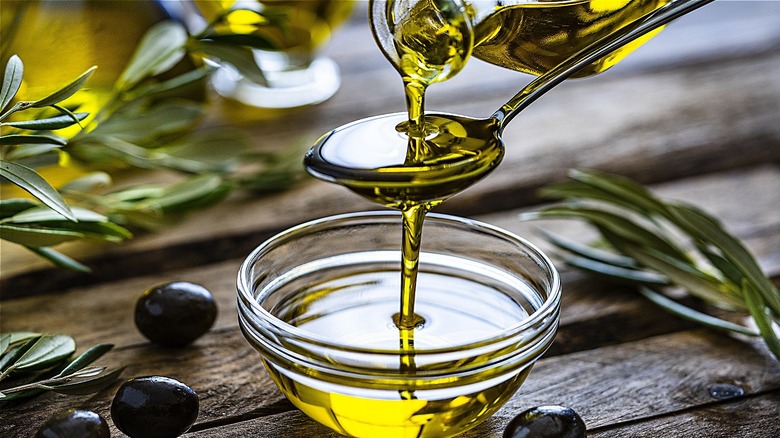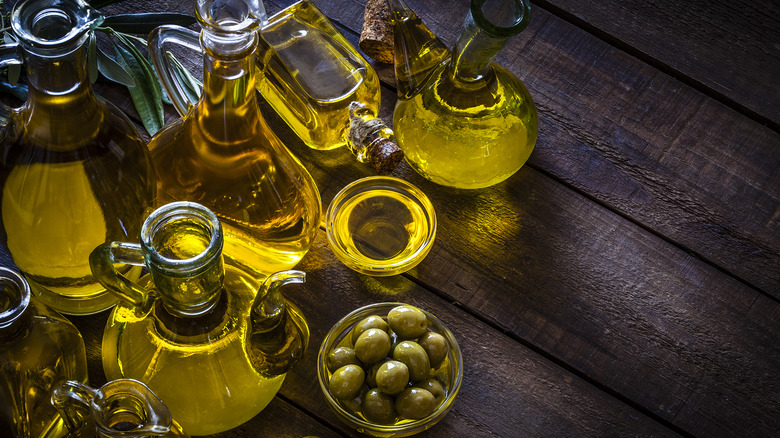The Color Mistake You're Making When Choosing Good Olive Oil
Many believe the telltale sign of superior olive oil is a rich, green color. However, the idea that the oil's color acts as an indicator of its quality is a myth likely born from the fact that refined olive oil becomes lighter in color after processing. Because refined olive oil is essentially stripped of its nutritional benefits during processing, it's often assumed that olive oils that appear lighter in color are inherently devoid of the flavor and nutrients characteristic of extra virgin olive oil. In reality, though, cold-pressed olive oil can come in a range of colors, from dark green to light golden yellow.
This drastic variation in color can be credited to the presence — or lack thereof — of two coloring agents found in plants: green chlorophyll and yellow carotenoids. Chlorophyll, the compound that makes plants lush and green, is most abundant in the earlier days of the harvesting season. For that reason, an early harvest will produce an oil with a dark green color, whereas olives harvested later in the season, when more carotenoids are present, will lend to an oil with a much lighter hue.
The shade of the oil doesn't only indicate the season the olives were harvested during but also the climate in which they were grown. Warm temperatures and dry conditions may produce lighter-colored olives and, thus, lighter-colored oil. Conversely, colder climates that experience heavy rainfall often create darker-colored fruit and oil.
How the color of olive oil affects the taste
While the color of olive oil reveals little about its quality, it can tell you a bit about what to expect in terms of flavor. Dark green olive oil, produced using unripe olives, is often bitter and pungent, whereas a more emerald-colored oil will have a brighter flavor with fruity and grassy notes. Conversely, golden or yellow-tinged oils, born from a late harvest, typically have a little more bite and a spicier taste than their greener counterparts.
Any olive oil connoisseur will tell you that the taste (not the color) is the deciding factor for the overall quality of olive oil. To this point, professional taste testers are often served samples of olive oil in blue-tinted glass so as not to allow the color of the oil to influence their opinion.
Instead, the mark of high-quality olive oil is a flavor profile that falls somewhere between fruity, peppery, and bitter. To compare, poor-quality olive oil might taste musty, sweaty, metallic, rancid, or vinegary.

